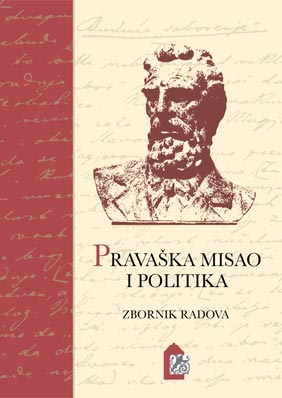Jedan pogled na gospodarsku aktivnost pravaških vođa od 1861. do 1914. godine
A look at the economic activity of the leadership of the Party of Right , 1861-1914
Author(s): Mira Kolar-Dimitrijević
Subject(s): History, Economic history, Political history, Modern Age, Recent History (1900 till today), 19th Century, Pre-WW I & WW I (1900 -1919), Between Berlin Congress and WW I
Published by: Hrvatski institut za povijest
Summary/Abstract: Rightist economic activity changed from case to case; it was strongly influenced
by the regulations of the Croat-Hungarian Agreement of 1868.
The article divides the economic management of the Party of Right into three time periods:
1. 1861-1871.
Kvaternik writes his well known work Hrvatski glavničar (Croatian Capitalist)
which points to the necessity of creating domestic capital and stimulating its growth with a stock exchange. His ideas did not find fertile ground because the members of the party did not recognize their importance.
2. 1878-1894
Following the quiet that descended upon Rightist ranks after the Rakovica uprising
of 1871, the party activists returned to the political stage in 1878. Until 1890, F. Folnegović was the most important individual in the party concerned with economic matters. His efforts enabled the publication of official party organs and the construction of the Starčević Dom (Starčević House).
3. 1895-1914
In 1890, J. Frank joined the Party of Right. Even though he never established a particular economic programme for strengthening the Pure Party of Right, he can largely be credited for the fact that the coffers of the Party began to receive important contributions which he invested into party activities, but which he also used to initiate the development of industry and banking (for e.g., “Danica” in Koprivnica).
During the term of P. Rauch as Ban, work was begun on establishing a Department of Economy for the Land Government, which in 1914 resulted in the creation of the fourth branch of this government, the Department of National Economy, which, even if it came too late, changed the very nature of the Croat-Hungarian Agreement.
Book: Pravaška misao i politika
- Page Range: 97-123
- Page Count: 27
- Publication Year: 2007
- Language: Croatian
- Content File-PDF

